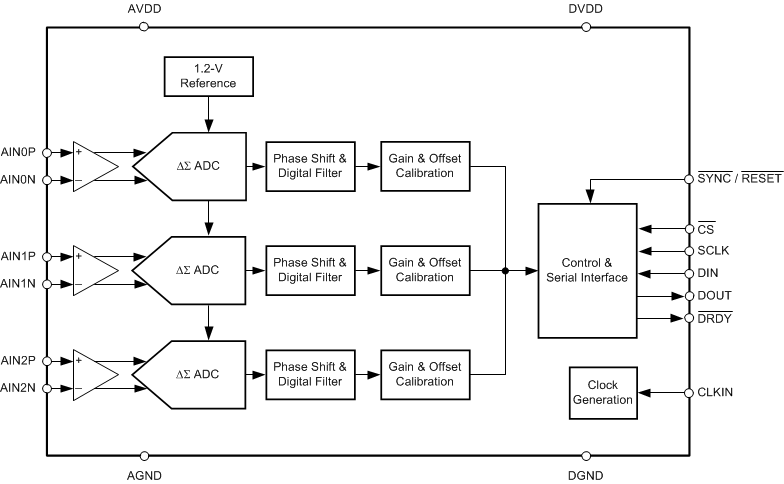TIDUF98 October 2024
- 1
- Description
- Resources
- Features
- Applications
- 6
- 1System Description
- 2System Overview
- 3Design Files
- 4Related Documentation
- 5About the Authors
2.2.1 ADS131M03
The ADS131M03 is a three-channel, simultaneously sampling, 24-bit, delta-sigma (ΔΣ), analog-to-digital converter (ADC) that offers wide dynamic range, low power, and energy-measurement-specific features, making the device an excellent fit for energy metering, power metrology, and circuit breaker applications. The ADC inputs can be directly interfaced to a resistor divider network or a power transformer to measure voltage or to a current transformer, shunt, or a Rogowski coil to measure current.
The individual ADC channels can be independently configured depending on the sensor input. A low-noise, programmable gain amplifier (PGA) provides gains ranging from 1 to 128 to amplify low-level signals. Additionally, this device integrates channel-to- channel phase calibration and offset and gain calibration registers to help remove signal-chain errors.
A low-drift, 1.2V reference is integrated into the device reducing printed circuit board (PCB) area. Optional cyclic redundancy checks (CRC) on the data input, data output, and register map maintain communication integrity. The complete analog front-end (AFE) is offered in a 20-pin TSSOP package or a leadless 20-pin WQFN package and is specified over the industrial temperature range of –40°C to +125°C. Figure 2-2 shows a block diagram of this device.
 Figure 2-2 ADS131M03
Functional Block Diagram
Figure 2-2 ADS131M03
Functional Block DiagramIn Figure 2-2, 2.7V–3.6V must be fed between AVDD and AGND as well as between DVDD and GND. In addition, an external clock must be connected to CLKIN. The ADS131M03 device asserts DRDY pin to alert the host MCU that there are new ADC samples available and is configured for high-resolution mode. This mode utilizes the 8.192MHz frequency input, delivered thru the M0_CLKOUT pin of the MSPM0L2228 MCU.